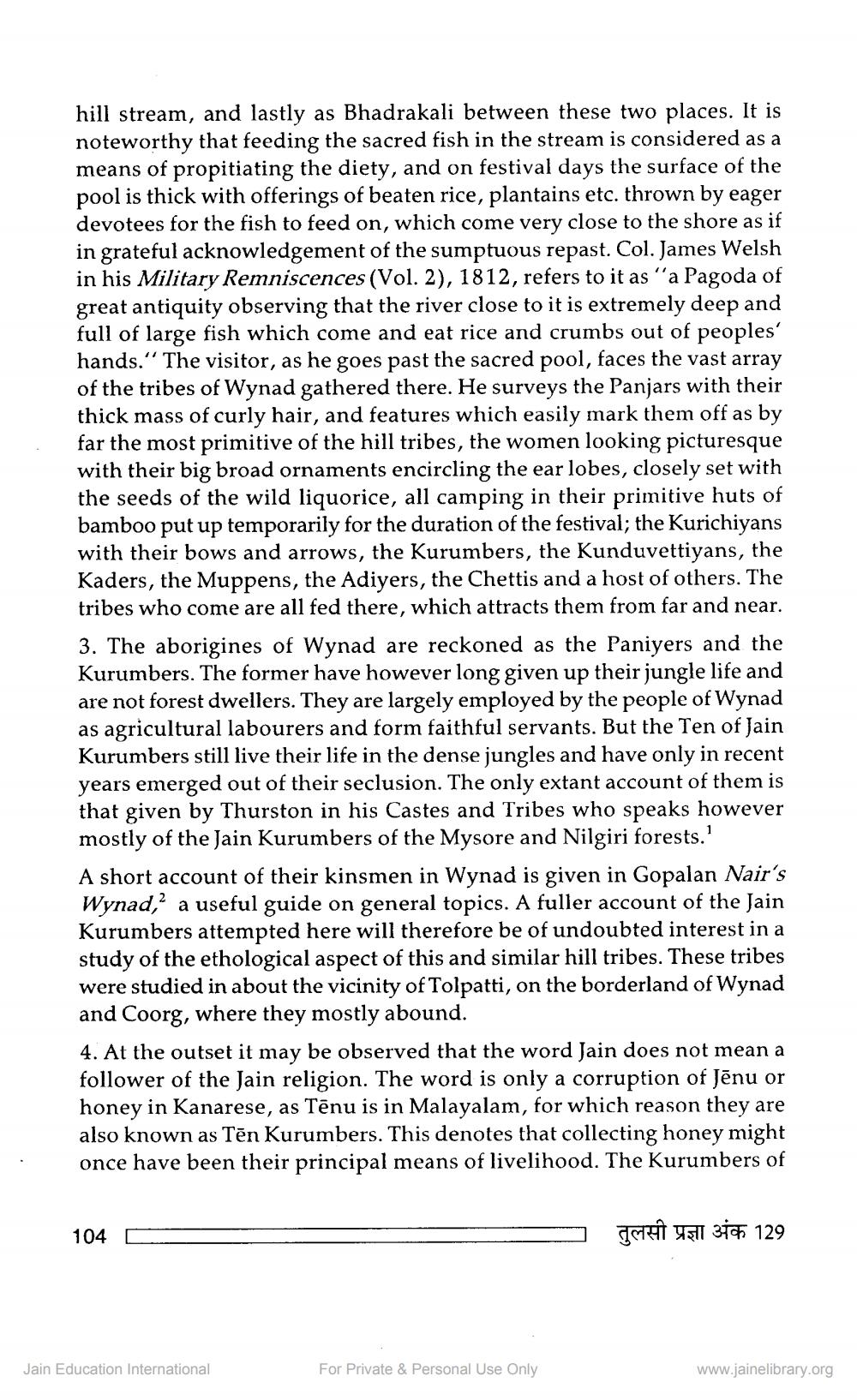________________
hill stream, and lastly as Bhadrakali between these two places. It is noteworthy that feeding the sacred fish in the stream is considered as a means of propitiating the diety, and on festival days the surface of the pool is thick with offerings of beaten rice, plantains etc. thrown by eager devotees for the fish to feed on, which come very close to the shore as if in grateful acknowledgement of the sumptuous repast. Col. James Welsh in his Military Remniscences (Vol. 2), 1812, refers to it as "a Pagoda of great antiquity observing that the river close to it is extremely deep and full of large fish which come and eat rice and crumbs out of peoples' hands." The visitor, as he goes past the sacred pool, faces the vast array of the tribes of Wynad gathered there. He surveys the Panjars with their thick mass of curly hair, and features which easily mark them off as by far the most primitive of the hill tribes, the women looking picturesque with their big broad ornaments encircling the ear lobes, closely set with the seeds of the wild liquorice, all camping in their primitive huts of bamboo put up temporarily for the duration of the festival; the Kurichiyans with their bows and arrows, the Kurumbers, the Kunduvettiyans, the Kaders, the Muppens, the Adiyers, the Chettis and a host of others. The tribes who come are all fed there, which attracts them from far and near.
3. The aborigines of Wynad are reckoned as the Paniyers and the Kurumbers. The former have however long given up their jungle life and are not forest dwellers. They are largely employed by the people of Wynad as agricultural labourers and form faithful servants. But the Ten of Jain Kurumbers still live their life in the dense jungles and have only in recent years emerged out of their seclusion. The only extant account of them is that given by Thurston in his Castes and Tribes who speaks however mostly of the Jain Kurumbers of the Mysore and Nilgiri forests.'
A short account of their kinsmen in Wynad is given in Gopalan Nair's Wynad, a useful guide on general topics. A fuller account of the Jain Kurumbers attempted here will therefore be of undoubted interest in a study of the ethological aspect of this and similar hill tribes. These tribes were studied in about the vicinity of Tolpatti, on the borderland of Wynad and Coorg, where they mostly abound.
4. At the outset it may be observed that the word Jain does not mean a follower of the Jain religion. The word is only a corruption of Jēnu or honey in Kanarese, as Tēnu is in Malayalam, for which reason they are also known as Tēn Kurumbers. This denotes that collecting honey might once have been their principal means of livelihood. The Kurumbers of
तुलसी प्रज्ञा अंक 129
104
Jain Education International
For Private & Personal Use Only
www.jainelibrary.org




